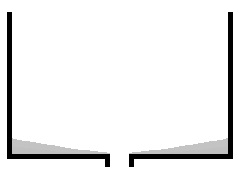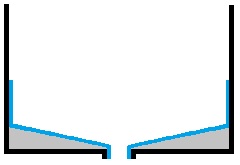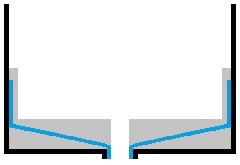How to Install Liner to Make a Shower Pan
DIY Tile Showers
Tiled showers require a special liner system to protect the sub-floor and baseboards from water damage. Tiles and grout are not water-resistant, and over time, water will seep through the grout and soak the mortar or cement below. If there is no waterproof liner between the cement and baseboard, your floor can rot. By installing a special waterproof liner into your shower pan, you can prevent this inevitable seepage from deteriorating the wooden floor boards below. To create a shower pan you will need mortar or cement to create a pre-slope bed, flexible PVC liner, and more cement to create a level surface for tiling.

First, create a slope for the shower pan area so that the liner is laid on a surface that slopes down toward the drain. To do this, lay mortar or cement about 2 inches deep at the base of the shower and trowel it so that it slopes gently toward the drain. The easiest way to do this is to temporarily plug the drain hole and trowel outward from the shower drain. The plug will prevent mortar from clogging the drain. Let the pre-slope dry completely before doing the next step. (Note: Figures are not drawn to scale.)

Line the base of the shower with the flexible PVC shower pan liner. You can buy this at a home improvement store. Cut a hole in the sheet where it will lay over the drain hole. Do not cut the hole too big; it is best if the hole is about 1/2" - 1" smaller than the drain hole. Staple the sheet so that it goes up sides of the shower about 9-12 inches. Also staple it over the ledge at the base of the shower. At the corners, do not cut the sheet, but rather fold the corners tightly and neatly and secure the flap with plenty of staples. Do not staple or nail the shower liner on the shower floor. If you must use two sheets, cement them together so that there are no leaks in the shower pan.

Next, apply a layer of mortar over the liner so that the floor of the shower is level and the liner is completely covered all around the walls of the shower. For the shower walls, you can also use cement backer boards.
Add the drain assembly so that it is flush with the mortar floor surface. Seal it with silicone caulk. You can also add the drain assembly between the second and third steps.
The last step is to install the shower tiles with thinset and apply grout when the tiles have set. Do not use mastic in place of thinset. Mastic is not ideal for use in showers and will deteriorate after a few years.
© Had2Know 2010
